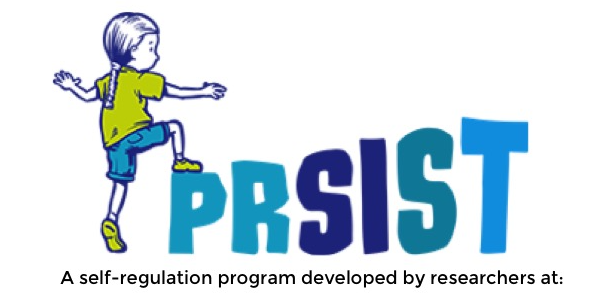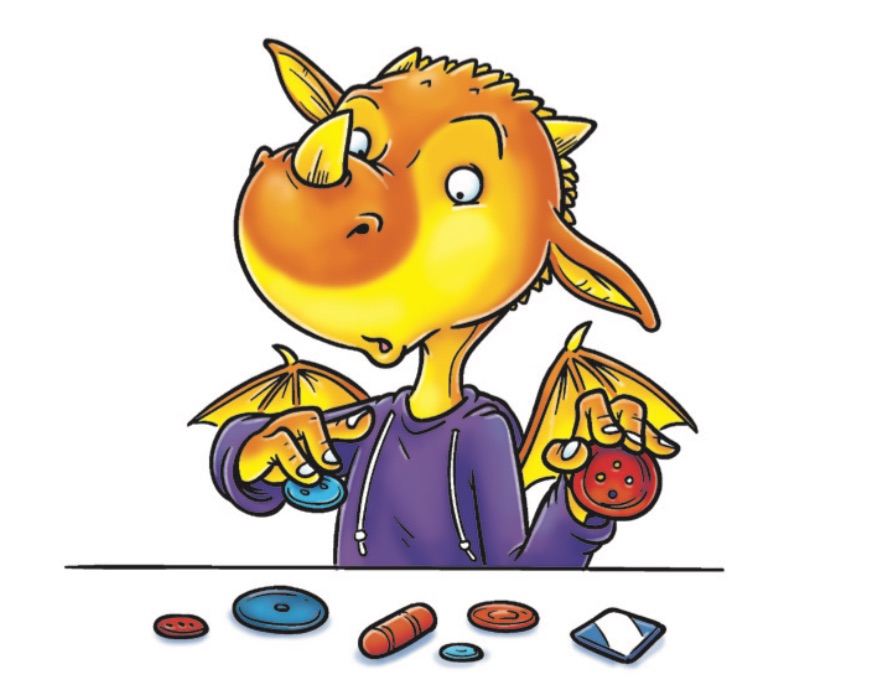
Mind Reader
What to do: Tell the children that you want to play a mind-reading game: That you are thinking of a particular way to sort objects, and you want to see if the children can ‘read your mind’ to figure it out. Use up to 20 objects that can be sorted according to different categories (e.g., colour, size, shape). You could introduce the activity in any number of ways but for example, you might say:
I am thinking of a way you could put these things into groups, and I want to see if you can read my mind and put them into the groups I am thinking. For example, I could put the blue ones together and the red ones together. But I’m thinking of a different way you could put them into groups. Can you guess which other way I am thinking to put them into groups?
Let the child decide when they are finished sorting the objects. If a child has sorted correctly, tell them That’s right. Now I’m going to think of a different way. If a child sorts incorrectly, tell them That’s a clever way to put them into groups, but that’s not the way I was thinking of. Let’s try a different way to see if you can work out what I am thinking. If you are doing this in a group, have children take turns sorting the objects. In between attempts to sort, support children to think and talk about ways the objects are the same and different from each other (and thus can be sorted).
Too easy? How to increase challenge: Choose sorting rules that incorporate two dimensions at once (sort by colour and size: large red, small red, large green, small green). This will require some explanation, demonstration, and practice with the children.
Ideal formation(s): Individual or small group (no more than four children).
What you need: A collection of objects that can be sorted by a number of different dimensions (e.g., colour, size, category, where it is normally located, its function, etc.) For example, these may be objects found in nature that can be sorted by colour, size, whether they are hard, whether they are found on the ground, whether they grow (stone, leaves of different types, stick, grass, pine cone, flower, etc.), blocks (of different colours, sizes, and shapes), or cards depicting digits and quantities (to be sorted as less or more than a specific number).
What it does: This activity challenges children’s ability to direct and redirect their thinking. It also supports problem solving and emergent classification.
Links to EYLF:
- Demonstrate an increasing capacity for self-regulation; Be open to new challenges and discoveries; Take considered risks in their decision-making and cope with the unexpected; Persist when faced with challenges and when first attempts are not successful; Increasingly cooperate and work collaboratively with others (from Outcome 1.2)
- Show interest in other children and being part of a group (from Outcome 1.4)
- Make choices, accept challenges, take considered risks, manage change and cope with frustrations and the unexpected (from Outcome 3.1)
- Persist even when they find a task difficult (from Outcome 4.1)
- Apply a wide variety of thinking strategies to engage with situations and solve problems, and adapt these strategies to new situations (from Outcome 4.2)
- Begin to sort, categorise, order and compare collections and events and attributes of objects and materials, in their social and natural worlds (from Outcome 5.4)




